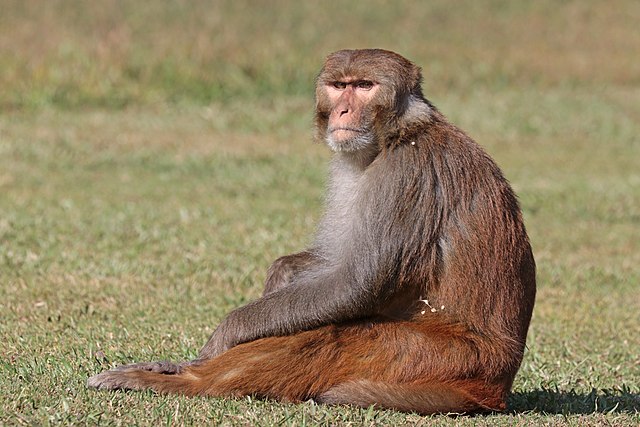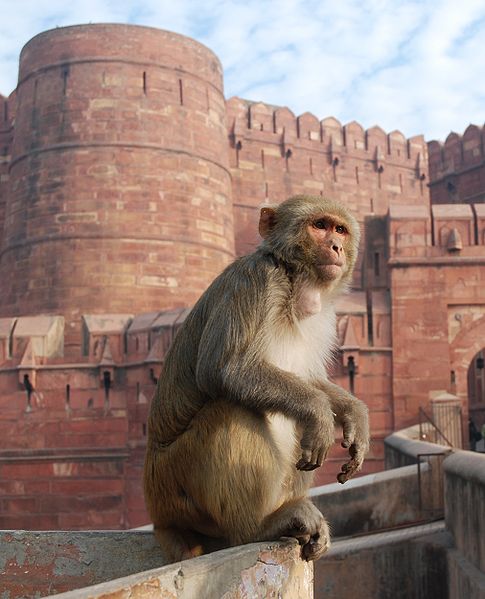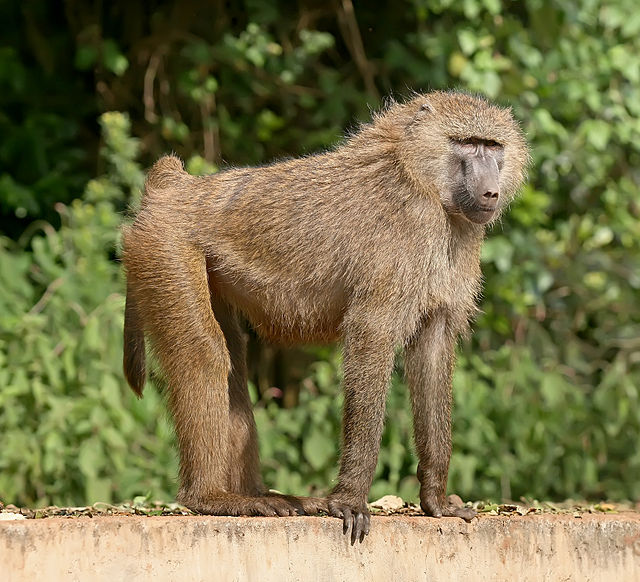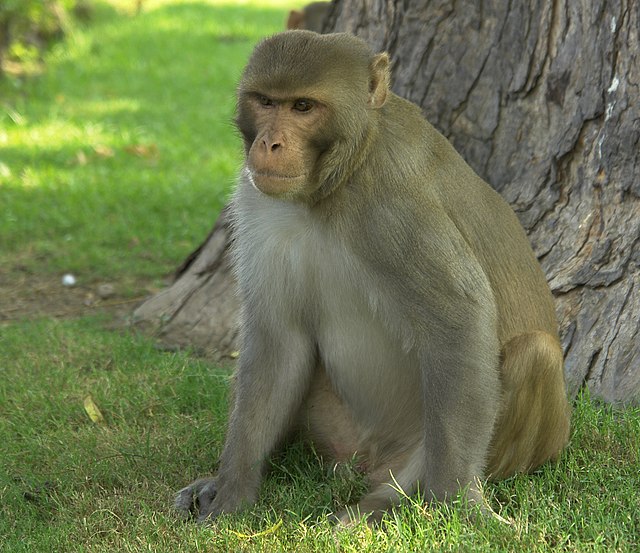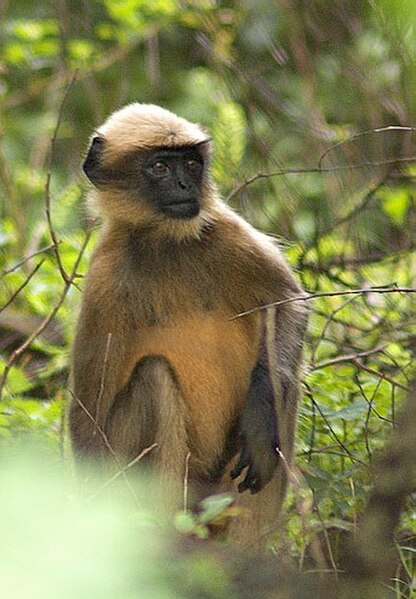The rhesus macaque, colloquially rhesus monkey, is a species of Old World monkey. There are between six and nine recognised subspecies that are split between two groups, the Chinese-derived and the Indian-derived. Generally brown or grey in colour, it is 47–53 cm (19–21 in) in length with a 20.7–22.9 cm (8.1–9.0 in) tail and weighs 5.3–7.7 kg (12–17 lb). It is native to South, Central, and Southeast Asia and has the widest geographic range of all non-human primates, occupying a great diversity of altitudes and a great variety of habitats, from grasslands to arid and forested areas, but also close to human settlements. Feral colonies are found in the United States, thought to be either released by humans or escapees after hurricanes destroyed zoo and wildlife park facilities.
Image: Rhesus macaque (Macaca mulatta mulatta), male, Gokarna
Image: Female and juvenile rhesus macaque at Galtaji, Jaipur, Rajasthan, India
Rhesus macaque by the Agra Fort, Uttar Pradesh, India
Mother and child rhesus macaque in Nepal
Old World monkeys are primates in the family Cercopithecidae. Twenty-four genera and 138 species are recognized, making it the largest primate family. Old World monkey genera include baboons, red colobus and macaques. Common names for other Old World monkeys include the talapoin, guenon, colobus, douc, vervet, gelada, mangabey, langur, mandrill, surili (Presbytis), patas, and proboscis monkey.
Old World monkey
A male rhesus macaque (Macaca mulatta)
Young collared mangabey (Cercocebus torquatus).
Black-footed gray langur, (Semnopithecus hypoleucos)

